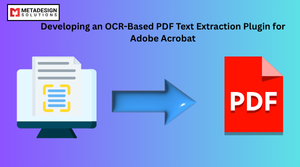Introduction to Office Add-ins and Microsoft Graph API
Office Add-ins allow developers to enhance the functionality of Microsoft Office applications like Word, Excel, and Outlook. By integrating these add-ins with Microsoft Graph API, developers can access a wide range of Microsoft 365 services, such as email, calendars, files, and user profiles. This combination unlocks powerful possibilities for creating secure and scalable business solutions.
Microsoft Graph API serves as a unified endpoint for accessing data and intelligence from Microsoft 365. It enables seamless integration with various Office applications, offering a single interface to interact with organizational data.
Key Features of Microsoft Graph API
- Unified API Endpoint: Access to Microsoft 365 services via a single endpoint (https://graph.microsoft.com).
- Comprehensive Data Access: Fetch data from OneDrive, SharePoint, Teams, and more.
- Real-Time Updates: Use webhooks to receive real-time notifications of changes.
- Rich SDK Support: Available for multiple platforms, including .NET, JavaScript, and Python.
- Advanced Query Capabilities: Filter, sort, and search data efficiently using OData query parameters.
Benefits of Using Microsoft Graph API for Add-ins Development
- Streamlined Integration: Unified access to multiple Microsoft 365 services simplifies development.
- Improved User Experience: Enables rich, contextual features within Office applications.
- Enhanced Collaboration: Facilitates interaction with shared data and team resources.
- Scalability: Supports high-volume transactions and cloud-based architectures.
Security Considerations for Office Add-ins
Authentication and Authorization
Microsoft Graph API uses the OAuth 2.0 protocol for authentication. This ensures secure and delegated access to user data. Implement authentication using Azure Active Directory (AAD) and the Microsoft Identity Platform.
const msal = require('@azure/msal-node');
const msalConfig = {
auth: {
clientId: "<your-client-id>",
authority: "https://login.microsoftonline.com/<tenant-id>",
clientSecret: "<your-client-secret>"
}
};
const cca = new msal.ConfidentialClientApplication(msalConfig);
const authResponse = await cca.acquireTokenByClientCredential({
scopes: ["https://graph.microsoft.com/.default"]
});
Handling Sensitive Data
- Use encrypted storage for sensitive information.
- Avoid storing tokens or credentials locally.
- Implement access control mechanisms to restrict data access based on user roles.
Best Practices for Securing Add-ins
- Validate all input data to prevent injection attacks.
- Use HTTPS for all network communications.
- Regularly update dependencies to address security vulnerabilities.
Scalability Strategies for Office Add-ins
Cloud Integration
Host critical components of your add-in, such as authentication services and data processing, in the cloud. Utilize Azure Functions or AWS Lambda for scalable backend services.
Efficient API Calls
- Batch multiple requests into a single API call.
- Use delta queries to fetch only updated data.
Building Office Add-Ins for Scale?
Schedule a call to ensure security and performance from day one.
const deltaLink = "<previous-delta-link>";
const response = await fetch(`https://graph.microsoft.com/v1.0/me/messages/delta?$deltatoken=${deltaLink}`, {
headers: {
Authorization: `Bearer ${accessToken}`
}
});
const updatedData = await response.json();
Caching Mechanisms
- Implement client-side caching for frequently accessed data.
- Use server-side caching for expensive operations.
Step-by-Step Guide to Building a Secure and Scalable Add-in
Setting Up the Development Environment
- Install Node.js and npm.
Set up a new Office Add-in project using the Yeoman generator:
npm install -g yo generator-office
- yo office
- Select the Excel or Outlook Add-in template based on your requirements.
Authenticating with Microsoft Graph API
- Register your application in the Azure portal.
- Configure permissions for Microsoft Graph API (e.g., Mail.Read, Files.ReadWrite).
const authProvider = async () => {
const tokenResponse = await cca.acquireTokenByClientCredential({
scopes: ["https://graph.microsoft.com/.default"]
});
return tokenResponse.accessToken;
};
Accessing and Manipulating Office Data
Use Microsoft Graph API to interact with Office data. For example, to fetch emails from Outlook:
const fetchEmails = async (authToken) => {
const response = await fetch("https://graph.microsoft.com/v1.0/me/messages", {
headers: {
Authorization: `Bearer ${authToken}`
}
});
const emails = await response.json();
console.log(emails);
};
Optimizing Performance for Scalability
- Use async and await for non-blocking API calls.
- Monitor API usage and implement rate-limiting strategies.
- Employ pagination for handling large datasets efficiently.
const fetchLargeData = async (authToken, endpoint) => {
let data = [];
let nextPage = endpoint;
while (nextPage) {
const response = await fetch(nextPage, {
headers: {
Authorization: `Bearer ${authToken}`
}
});
const result = await response.json();
data = data.concat(result.value);
nextPage = result['@odata.nextLink'];
}
return data;
};
Testing and Debugging Office Add-ins
- Use the F12 developer tools in your browser to debug JavaScript code.
- Test add-ins across different Office clients (desktop, web, and mobile).
- Utilize Microsoft’s Validation Tools for Add-ins to ensure compliance with Office standards.
Conclusion
Building secure and scalable Office Add-ins using Microsoft Graph API unlocks immense potential for enhancing productivity and collaboration within Microsoft 365. By following best practices for security, leveraging cloud technologies, and optimizing API interactions, developers can create robust and efficient solutions tailored to business needs.
For professional assistance in developing custom Office Add-ins, contact MetaDesign Solutions at sales@metadesignsolutions.com.
Related Keyphrase:
#OfficeAddins #MicrosoftGraphAPI #SecureDevelopment #ScalableApps #MicrosoftOffice #Office365 #GraphAPI #PluginDevelopment #AddinSecurity #ScalableAddins #OfficeAutomation #TechInnovation #BusinessApps #MicrosoftDevelopment #OfficeTools #CloudIntegration #SoftwareDevelopment #ProductivityTools #OfficeDevCommunity #SecureCoding #AppScalability #MicrosoftGraph #OfficeAddinDevelopment #TechForBusiness



